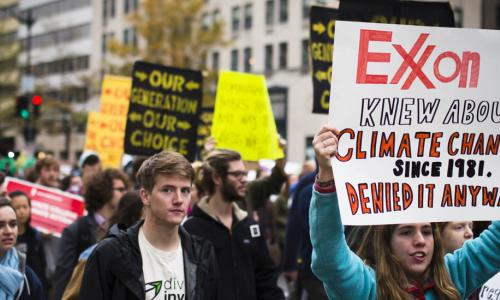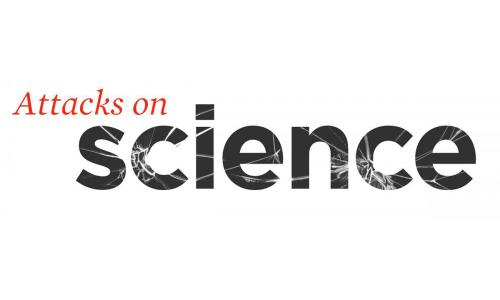Heather Von St. James is a 12-year mesothelioma cancer survivor who has dedicated her life to spreading awareness of mesothelioma and the dangers of asbestos. She vowed if she survived mesothelioma, she would do everything to educate the public and continue to fight for regulations that save Americans’ lives. She will continue to be the voice of mesothelioma victims, advocating for a cure and an asbestos ban in the United States.
I’ve always been fascinated with how things work. I spent hours taking things apart and fixing them to better understand the mechanics of things. It should come as no surprise that science was one of my favorite subjects. I went into a career in hairdressing and loved thinking about the chemistry behind how the products worked and how certain chemicals could change hair texture in a matter of minutes. My clients loved it because I could explain how and why some processes would work and others wouldn’t.
About 10 years into my career, three and a half months after having my first and only child, I was diagnosed with malignant pleural mesothelioma, a malignant tumor of the pleura, caused by exposure to asbestos. It was my doctor who informed me that my cancer was most likely caused by asbestos exposure I had earlier in life. I found out that mesothelioma has a long latency period after initial exposure, anywhere from 10 to 50 years.
I thought back to my childhood and remembered my dad doing construction work when I was around 7 years old. He would come home from work covered in a thick greyish dust from the asbestos-containing drywall mud he sanded and cleaned up. He had a work jacket he wore every day, and it was this coat that I would put on to do my outside chores or feed my rabbits. I breathed in the toxic fibers from his coat and, 30 years later, got diagnosed with mesothelioma and given a prognosis of 15 months to live.
I was in shock. I thought surely asbestos had been banned! It was not until I learned more about this man-made disaster that the shock turned to rage. Not only was asbestos NOT banned, it is still being imported and used by the tons each year. Regulations around asbestos are weak at best, and most times it is overlooked as a nuisance rather than a deadly substance.
It was thought that mesothelioma cases would taper off and eventually stop altogether, when in fact the opposite is true. Mesothelioma cases are on the rise, due in part to the DIY craze of the last couple of decades. People unknowingly expose themselves and their families when they demolish rooms in homes where asbestos is present.
Asbestos was widely used in homes built in the 1950s through the 1970s. It was in tile, wrapped around pipes for insulation, used in roofing and siding. It was even used in the concrete poured in the sidewalks and driveways. Despite the years of scientific proof that exposure to asbestos caused a host of health issues, such as mesothelioma, asbestosis, lung cancer and uterine cancer, to name a few, companies continued to manufacture products used commercially and by the public. The asbestos and chemical companies continue to spread disinformation, extolling the virtues of asbestos despite the very real health threats. They say that it is perfectly safe when used correctly and precautions are taken. The World Health Organization and the U.S. Surgeon General both say there is no safe level of exposure to asbestos.
Yet despite the science, asbestos use continues, not just in the U.S., but worldwide. Only 55 countries have banned its use and Russia is the largest exporter, with India being the largest consumer. This means within 30 years, mesothelioma deaths will continue to rise, especially in underdeveloped countries where medical care is scarce and the knowledge of how to treat mesothelioma is nonexistent.
I’m happy to say that I am a 12-year survivor of the disease. I was one of the lucky ones. I was diagnosed early, and had intensive medical intervention that included the loss of my left lung, inter-operative heated chemo, followed by four more sessions of chemo and 30 sessions of radiation. I still suffer from chronic pain, breathing problems and a host of other issues because of my surgery and treatment, but I’m alive and have been here to raise my daughter. Without the science and innovation behind my treatments, I would not be here. I’m still a firm believer in the value of science and I know it saved my life. That is one of the reasons I’m so passionate about sharing my story and making people aware of the very real dangers of asbestos. I’ve taken my passion and turned it into advocacy and activism.
Thanks in part to our efforts, asbestos was named as one of the top ten chemicals up for review by the EPA. In my opinion, it is shameful that it has taken this long. We are one of the last industrialized countries left that has NOT banned asbestos. Canada is in the process of a complete ban now. I am hoping we can follow in their footsteps. I’ve been in meetings with our senate and congressional environmental staffers, telling them my story, and sharing the stories of the dozens of people I have met who can no longer speak for themselves. So many of these staffers don’t even realize that asbestos is not banned, and many of them have come on board to help in our cause. I’ve worked with nonprofit organizations and told my story in the media to get the message out that slashing funding to the EPA and cutting back regulations would be disastrous for our environment and human lives. Regulations are in place for a reason--without them, lives will be lost. I got sick because of lax regulations.
The goal of these collaborations was to tell people why asbestos needs to be banned and why we cannot afford to go back decades when it comes to safety and regulations. It makes my blood boil to hear that the current administration is so tone deaf when it comes to the very real dangers of asbestos.
I’m living proof that there is no safe level of exposure to asbestos. I am the patient that the asbestos companies never wanted to admit was a possibility, because I was exposed second hand. For decades, scientists and experts have been telling our government officials and industry heads about toxic chemicals and the dangers they pose for the public, but what usually happens is profits are put before people. People who are personally affected need to stand up and make their voices heard, alongside the scientific community whose research supports the policy changes that we envision. We need to listen to independent scientists and take their warnings at face value in order to help save lives and put an end to corporate disinformation campaigns.




